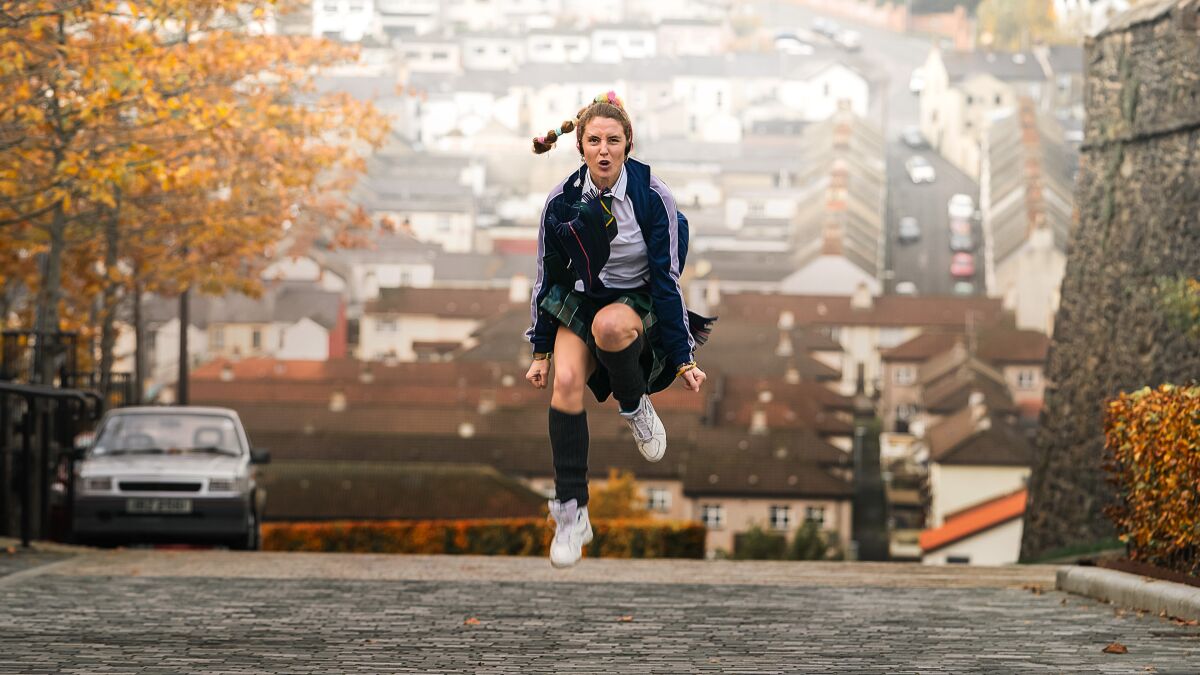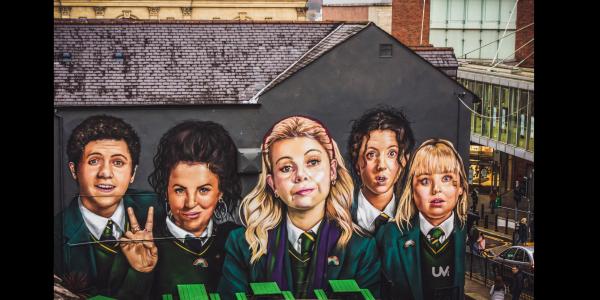Ian Clark is a PhD candidate in the Department of English and a 2020 Divided City Graduate Summer Research Fellow. He studies 20th-century Irish, British and postcolonial writing and is currently writing a dissertation analyzing walking as a narrative form in modern and contemporary Irish fiction and poetry.
In theory, I know what the Good Friday Agreement was. It was a political referendum, signed on April 10, 1998, often remembered for bringing an end to the Northern Irish Troubles by forging paths for reconciliation between Catholic and Protestant communities. I use this description when teaching about Northern Irish poetry or writing about sectarian violence and urban segregation in Belfast. Yet, with the 25th anniversary of the Agreement looming, this definition doesn’t seem quite right.
It certainly didn’t fit when I visited Derry, a city near the Northern Irish border that saw some of the Troubles’ worst violence. I took a walk there in 2012, over a decade into the “post-Agreement” era. Strolling through the city, I was struck by murals depicting children wearing gas masks, British paratroopers or bleeding Bloody Sunday victims. Murals like these often marked borders between neighborhoods segregated along sectarian lines. As I recall, the Troubles didn’t seem finished. The violence was still part of the landscape, the ghost of a memory I could feel in the city’s streets.
But it’s dangerous to believe the stereotype that the Irish are always mired in past grievances. The truth is more complicated than that — at least, it is for Lisa McGee’s Derry Girls (2018-22). The show draws on memories of growing up during the end of the Troubles, but only indirectly. In McGee’s Derry, sectarian violence exists as a slow-simmering backdrop to the hopes and dreams of her adolescent protagonists; Erin and her lovably misfit friends are as likely to obsess over a high-school romance as worry about sectarian bombings. In interviews, McGee has admitted she was reluctant to set Derry Girls during the Troubles at all. This reluctance is palpable in the show’s desire to both remember and forget violent history.

Take, for instance, the series finale. The episode opens on one of the characters, Orla, preparing to vote on the Good Friday Agreement. But rather than musing about politics, Orla walks into the street, switches on her Walkman, and starts grooving to Dario G’s upbeat 1997 dance jam “Sunchyme.” She proceeds to shoulder shimmy and twirl her way through Derry, dancing from the modern shopping district to the top of the city’s 17th-century walls, where a troop of little girls joins her in a jubilant blend of traditional Irish stepdance and robotic ’90s dance moves. Interspersed throughout this montage are shots of the main characters going about daily lives that don’t have much to do with either sectarianism or political referendums. Erin walks to a bookstore to read Hamlet, then Shakespeare Made Simple, then Teen Bulletin; her parents gush, not about the end of the Troubles, but over a new microwave. The joyful physical movement of Orla’s walk seems to personify Derry Girls’ refusal to remember Troubles-era Northern Ireland purely through sectarianism, illustrating alternative ways of remembering historical moments defined by violent conflict.
Still, violence remains part of the city, as becomes clear when Orla is stopped at a military checkpoint. Alarmed, she removes her headphones, declares “I need to get past,” and is allowed to proceed. McGee undermines any conciliatory possibility, however, with reminders of surveillance and control. For the corner of the shot depicts another, less lucky pedestrian being directed off-screen to an uncertain fate by an armed British soldier.
The Good Friday Agreement’s complexity lies in how it’s remembered. Northern Ireland’s social division and sectarian conflict did not end with the Agreement but remain fraught political issues, as events like Brexit illustrate. It’s not as if the Agreement didn’t have an impact; it’s just that defining this impact remains uncertain, even a quarter-century later. The Agreement marked the beginning of a period in which a collective impulse to “move on” from the past was complicated by a need to make sense of the violence that had occurred. Artists like McGee grapple with this complexity, offering ways of defining Northern Ireland beyond the Troubles, yet acknowledging that conflict’s enduring legacy. As Orla’s dance suggests, remembering the Troubles and the Agreement does not entail arriving at fixed destinations or definitions. It’s an ongoing process, one that must work through a haunting past time and again, even after the fanfare of anniversaries fades away.
Headline photo: A new mural lines the streets of Derry, Northern Ireland, this time depicting the cast of Derry Girls. Photo by K. Mitch Hodge via Unsplash.





